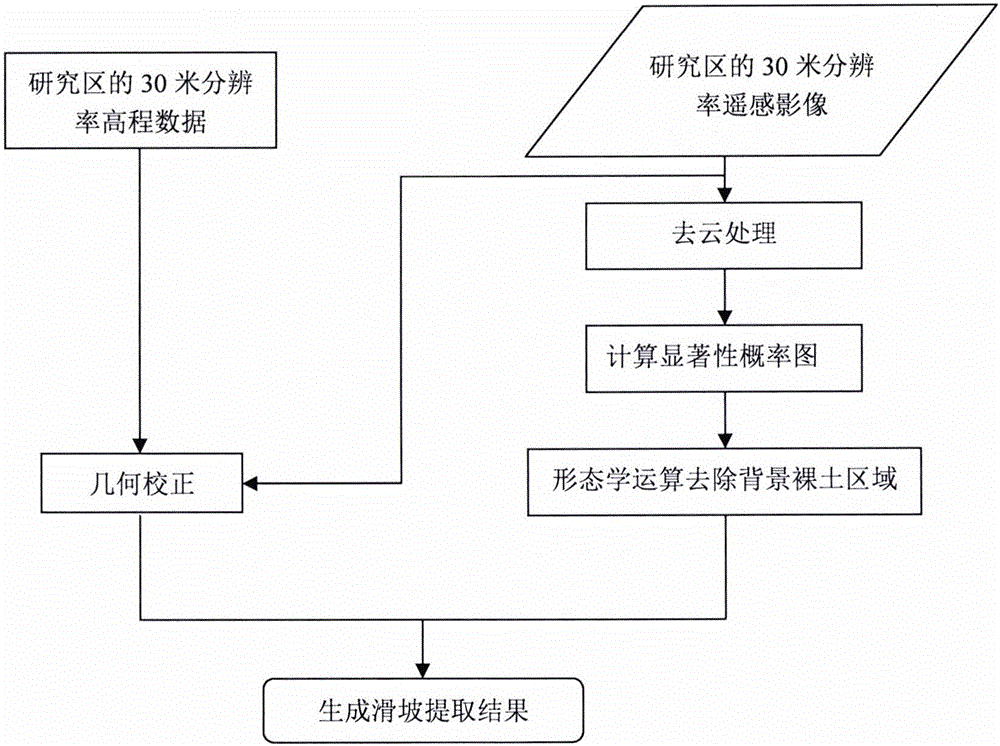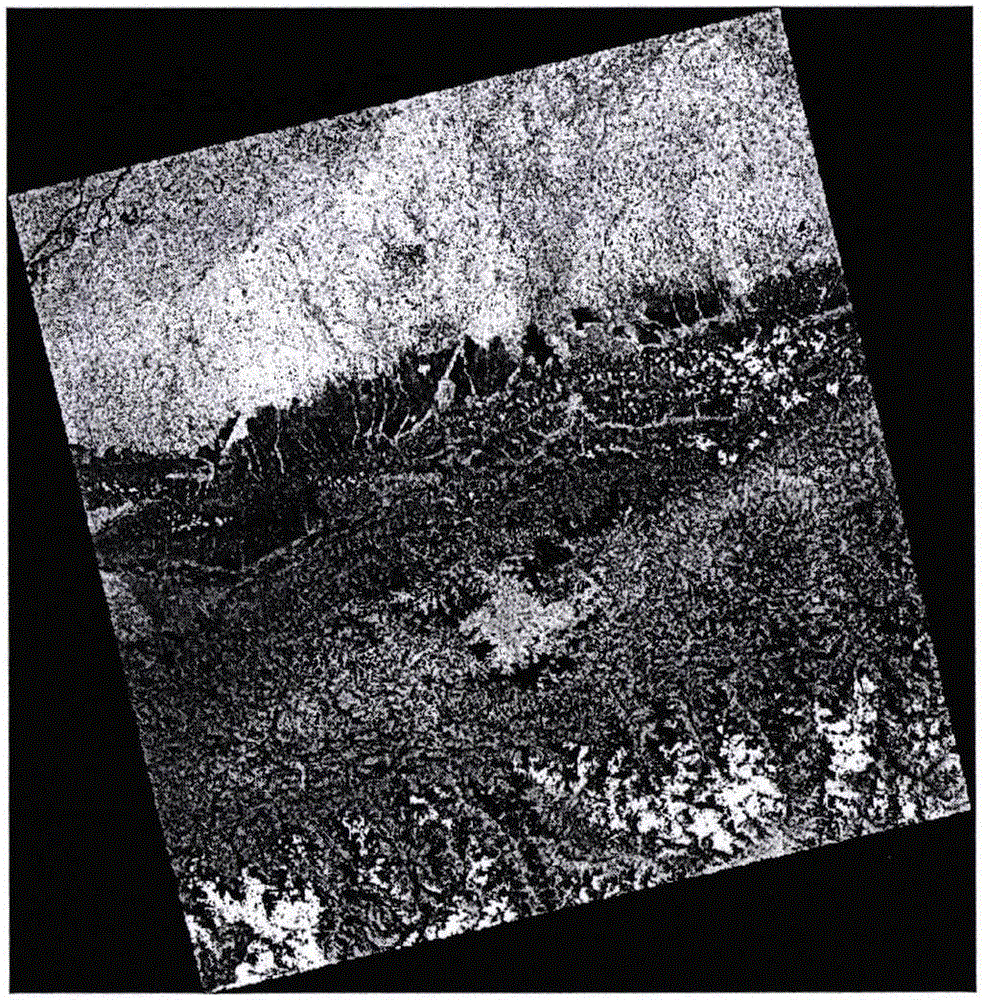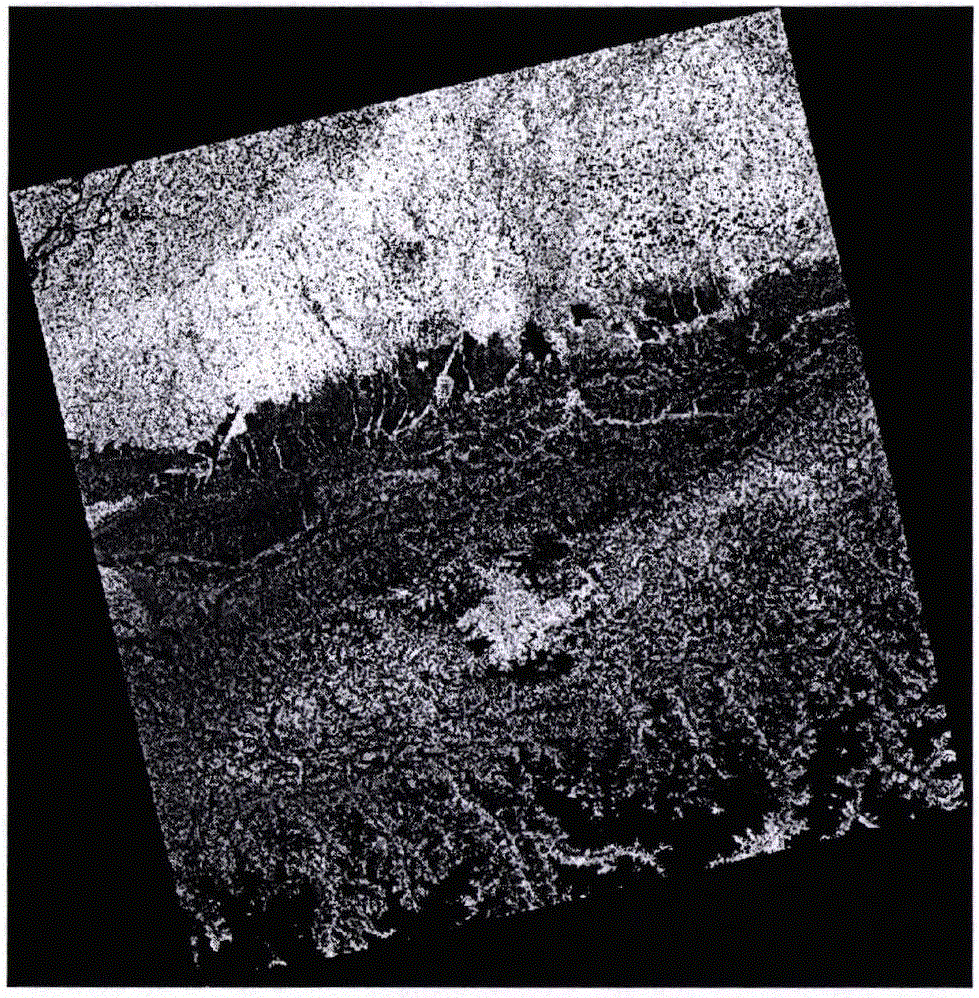Landslide extraction method based on remote-sensing image and altitude data
A remote sensing image and elevation data technology, applied in image data processing, image enhancement, image analysis, etc., can solve problems such as a large number of training samples, low extraction difficulty, large research areas and less research on complex background features
- Summary
- Abstract
- Description
- Claims
- Application Information
AI Technical Summary
Problems solved by technology
Method used
Image
Examples
Embodiment Construction
[0056] The technical solutions in the embodiments of the present application will be described below with reference to the drawings in the embodiments of the present application. Apparently, the described embodiments are only some embodiments of the present application, not all examples.
[0057] In the embodiment of the present application, the region near the Himalayas in Nepal is used as the research area, and a Landsat8 image with a resolution of 30 meters on June 1, 2015 (covering space 2 ° x 2 °) is selected (such as figure 2 shown) and the 30-meter resolution DEM data of the corresponding area are experimental data (such as image 3 shown). figure 2 The cloud shown can be removed by using the 9th band image of Landsat8 to generate a cloud mask, and then get Figure 4 .
[0058] Such as Figure 5 As shown, the FASA method can better enhance the bare soil area information and weaken the vegetation and other information. However, most of the bare soil belongs to non...
PUM
 Login to View More
Login to View More Abstract
Description
Claims
Application Information
 Login to View More
Login to View More - R&D
- Intellectual Property
- Life Sciences
- Materials
- Tech Scout
- Unparalleled Data Quality
- Higher Quality Content
- 60% Fewer Hallucinations
Browse by: Latest US Patents, China's latest patents, Technical Efficacy Thesaurus, Application Domain, Technology Topic, Popular Technical Reports.
© 2025 PatSnap. All rights reserved.Legal|Privacy policy|Modern Slavery Act Transparency Statement|Sitemap|About US| Contact US: help@patsnap.com



